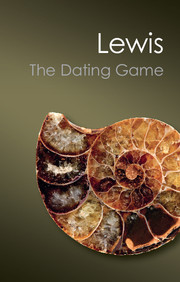Book contents
- Frontmatter
- Contents
- List of Illustrations
- Prelude to the Game
- A Brief History of Time
- Darwin's Sorest Trouble
- Mysterious Rays
- Doomsday Postponed
- Holidays in Mozambique
- This Vegetable Prison
- A Brimful of Promise
- Liquid Gold in Yenangyaung
- Durham Days
- The Ardnamurchan Affair
- Rewards and Retributions
- Why does the Sun Shine?
- The Age of Uranium
- The Age of the Earth
- Loose Ends
- Thanks and Acknowledgements
- Selected Bibliography
- Index
Rewards and Retributions
Published online by Cambridge University Press: 05 February 2014
- Frontmatter
- Contents
- List of Illustrations
- Prelude to the Game
- A Brief History of Time
- Darwin's Sorest Trouble
- Mysterious Rays
- Doomsday Postponed
- Holidays in Mozambique
- This Vegetable Prison
- A Brimful of Promise
- Liquid Gold in Yenangyaung
- Durham Days
- The Ardnamurchan Affair
- Rewards and Retributions
- Why does the Sun Shine?
- The Age of Uranium
- The Age of the Earth
- Loose Ends
- Thanks and Acknowledgements
- Selected Bibliography
- Index
Summary
Experience never misleads; what you are misled by is only your judgement.
Leonardo da VinciProgress on dating the age of the Earth was slow. Years, even decades went by without any significant advance being made. But science is like that. What is often not realised when the breakthrough finally occurs is that for years previously a few individuals had been diligently working in the background, thinking and writing about the problems, quietly and persistently pursuing their goal. Arthur Holmes was one. Every few years he took it upon himself to write an article summarising the current state of play with regard to the age of the Earth. In simple and lucid language he explained to the scientist and layman alike the history of radioactivity, its application to dating minerals and the age of the Earth, and included any recent developments. Year after year he said much the same thing: Kelvin's arguments were shot down in flames, the ‘hour-glass’ methods were swept aside, and radioactivity emerged victorious. Slowly, bit by bit, this one-man campaign spread the word about the great antiquity of the age of the Earth.
He also continued to build up the database. As early as 1923 a committee had been set up in America for ‘The Measurement of Geologic Time by Atomic Disintegration’, its objectives being to collate and monitor all the dating of rocks being done around the world.
- Type
- Chapter
- Information
- The Dating GameOne Man's Search for the Age of the Earth, pp. 170 - 178Publisher: Cambridge University PressPrint publication year: 2012



